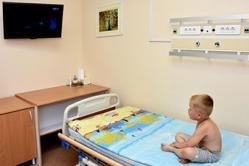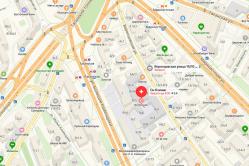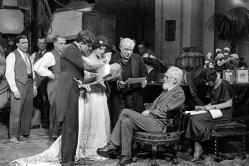Antipyretics for children are prescribed by a pediatrician. But there are emergency situations for fever when the child needs to be given medicine immediately. Then the parents take responsibility and use antipyretic drugs. What is allowed to give to infants? How can you bring down the temperature in older children? What medicines are the safest?
Education of preschoolers is much more effective if the teacher or parent uses visual materials. Beautiful pictures of clothes for children, for example, allow you to:
- conversation;
- developing;
- game.
Properly selected illustrations for children provide half the success of any speech therapy exercise, holding the attention of the baby and giving him the necessary "tips".
General principles of working with pictures
What rules should be followed when using pictures for classes with children? Not many requirements, but all important:
- Pick up pictures of items on the theme of clothing that are well known to children. For classes on the development of speech, you should not use images of obsolete things (mittens with elastic bands), folk costumes or hats (kokoshnik), uniforms (tunic).
- On cards for preschoolers, clothes should be drawn as detailed as possible, details are important here. It is good if the artist conveys the texture of the fabric (fluffy fur, rough drape, shiny satin). This will help children use more adjectives in descriptions.
- For one lesson, it is recommended to take no more than 10 subject pictures on a topic or one plot. This makes it possible to carefully examine the images, note all their features, and reflect this in speech.
- Pictures should be of good quality, dense. The background should be selected only white.
- All images must be used by topic. For example, clothes for kindergarten or summer wardrobe.


















You can make an excellent demonstration material on the topic of clothing yourself if you print out the illustrations for this article and stick them on a dense base with tape.
How to use pictures in class and games
If you want to use clothing cards for class, it is important to first give the guys a good look at them.
It is useful to play several games (attention or logic) with illustrations selected for the speech workshop, which can then be used in the classroom. This gives children the opportunity to quickly get acquainted with the drawings, ask an adult questions about what they saw. The following tricks will be helpful:
- If you plan to have a conversation on the topic “Winter clothes”, then you should take the time to play “Wear it in winter or summer?” or "Find a pair" (with socks, mittens, hats, scarves, warm shoes).
- Read poems or a short story about the process of dressing outside in the cold season.
- Run an applique on the theme of clothing or ask the children to draw a picture. You can also take cut pictures, puzzles with wardrobe elements, coloring pages “Clothes and Shoes”, designers “Young Fashion Designer” for preparatory work.
- Offer the children thematic riddles about clothes that he already knows well.
- It is worth choosing the appropriate clothes for the dolls and organizing games with them.
After such a preliminary “immersion in the topic”, it will be much easier for children to participate in speech games.












Speech games with pictures
Here are some examples of speech games that can be played with preschool children in speech therapy classes and at home.
- "Let's go for a walk"
Invite the child to choose one card at a time from the Baby Clothes series and talk about why they wear it, describing the features (I will wear this long woolen scarf. I will tie it over my overalls to keep me warm).
- "Wow, what mittens!"
Each player, in turn, chooses any picture with a piece of clothing. Then he names one of his qualities, properties. The card then passes to another player. This continues until all characteristics are named. (Example: Mittens - warm, fluffy, knitted, colorful, soft, new, woolen, fashionable). The last person to say the word keeps the card. The winner is the one who collects the most pictures in the whole game.
- "Dressing the Babies"
All cards with clothes are laid out in front of the players. Each of them, in turn, chooses the picture on which he can affectionately name the image (Example: felt boots, scarf-scarf, fur coat).
- "Let's put things in order"
Each player takes one "closet" with symbols-images of lexical topics: Clothes and Shoes, as well as Headwear. You can add a few more groups: upper, for home, by season. The host takes out one card at a time, then calls what is shown on it. You need to "put this thing in the closet." If its owner manages to quickly pick up the card, then it remains with him, if not, the leader puts it aside. The winner is the one who first "fills the cupboard" correctly.
- "Funny riddles about clothes and shoes"
Distribute subject cards on the topic to all the players. Everyone must come up with riddles about the clothes, the images of which he got.
- "Twins"
Pick up pairs of pictures with similar wardrobe items (hat-hat, sundress dress, boots-boots). Invite the child to talk about the similarities and differences. Whoever comes up with the most signs wins.
Each of the parents wants his child to grow up smart and successful, so he tries to start working with him as early as possible. It is most convenient to conduct classes with a child showing him development cards. By showing the baby educational pictures for children, you help to expand the baby's vocabulary. These can be cards for children that depict animals, vegetables, fruits, furniture, pictures of clothes, cars, plants, and so on.
How to conduct classes with a child on cards
When studying new pictures, you need to correctly name what is shown on the card, tell what it is, what it is used for. You can even play a game of find the object. For example, collect some items that are in the house, show them on a card, and then invite the child to find it in a pile of things. The child will really like this game, and you will spend time with benefit and pleasure.
Here are clothes for children from 36 items containing pictures.
Educational cards for children "Clothes"

Educational cards for children "Clothes"

Educational cards for children "Clothes"

Educational cards for children "Clothes"

Educational cards for children "Clothes"

Educational cards for children "Clothes"

Educational cards for children "Clothes"

Educational cards for children "Clothes"

Educational cards for children "Clothes"

Educational cards for children "Clothes"

Educational cards for children "Clothes"

Educational cards for children "Clothes"

Educational cards for children "Clothes"
How to make cards and pictures of clothes for children
The presented pictures of clothes need to be downloaded, printed, if there is a desire to stick on cardboard or other thick paper. Cut out the cards and show them to the child in a playful way.
You can play with one child or in a group of children. At the same time, tasks for children can be different:
1) correctly name the objects;
2) tell what to wear with what;
3) which of the things belong to men's clothing, and which to women's;
4) what is worn in winter, spring, summer, autumn.
The most important thing in communicating with a child is, undoubtedly, the positive attitude of an adult, then the training will be easy and beneficial for the child.
Educational games for children are very different. Children playing educational games train their own thinking, ingenuity, imagination, creativity.
You can also watch a developing video with the baby from Umachka channel — Presentations for children "Clothes"
Tatiana Dedlovskaya
Didactic game "What parts does clothing consist of"
Target. Fix the name of the parts of clothing and shoes.
Material. Pictures with the image of clothes, shoes.
Game progress
The speech therapist offers to look at the pictures, name the parts of clothes and shoes.
Clothing – hood, belt, pocket, sleeve, frill, button, zipper…
Shoes - toe, heel, sole, heel, shaft, zipper, clasp, strap, lace ...



Didactic game "Listen carefully, think carefully"
Target. Encourage children to independently determine the principle of classifying objects, to find an object that does not correspond to this principle. Fix the name of clothes and shoes. Develop attention, memory.
Game progress
The speech therapist names the words, asks the children to find an extra word in this group of words and explain their choice. Next, the children once again list the objects that they combined into a group.
Jacket, shirt, sweater, trousers.
Raincoat, coat, jacket, sundress.
Sundress, shorts, fur coat, T-shirt.
Dress, boots, shoes, slippers.
Fur coat, felt boots, scarf, shoes.
Boots, tights, boots, felt boots.



